Making a great impression at the table can be a nuanced art, whether in a social or professional setting. Understanding what to do and what not to do can significantly enhance your dining experience. This guide will explore 10 actions to avoid and 5 to embrace, all while maintaining an engaging and varied tone throughout.
Don’t Chew With Your Mouth Open

Imagine yourself at a fine dining experience, the clinking of glasses and soft chatter around you. Suddenly, a glimpse of half-chewed steak interrupts your focus. Chewing with your mouth open is not only unpleasant but distracts from the enjoyment of the meal.
When at the table, remember that your dining companions prefer to engage in pleasant conversation, not witness the mechanics of your meal consumption. It’s a simple habit to break with a slight consciousness and effort.
Being mindful enhances not only your table manners but the overall dining ambiance.
Don’t Interrupt Others
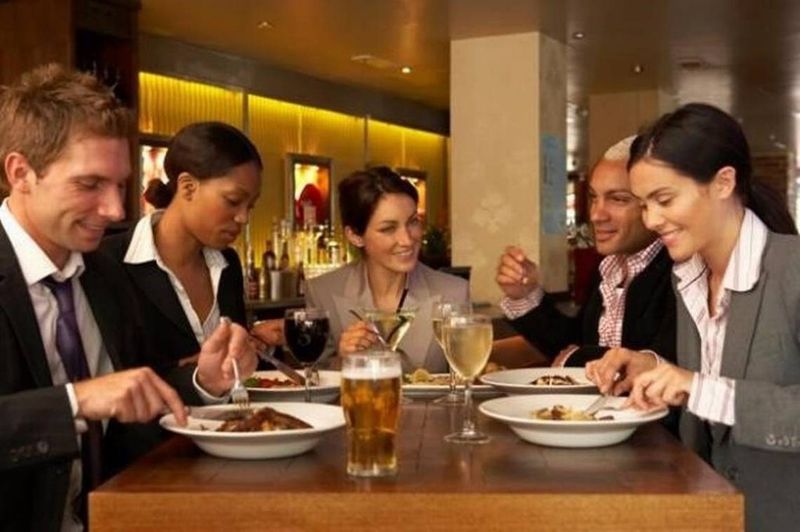
Interruptions can quickly derail a conversation, turning a pleasant meal into a frustrating experience. Picture this: a story mid-telling, only to be interrupted by an eager comment.
The art of listening is crucial at the dining table. Let others finish their thoughts before chiming in. This not only shows respect but enriches the dialogue. The flow of conversation reflects the rhythm of a meal, best savored when uninterrupted.
Cultivating patience in conversation enhances your dining rapport, making meals more enjoyable for everyone involved.
Don’t Use Your Phone at the Table

In an age where screens dominate our attention, the allure of a smartphone at the table can be strong. However, it signals disinterest in present company. Imagine sharing a story, only to realize your audience is engrossed in their screen.
Being present is a gift to your dining companions. It fosters genuine connections and adds depth to interactions.
Leave the phone aside, and engage with those around. The memories made during a shared meal often transcend digital exchanges, creating lasting impressions.
Don’t Reach Across the Table
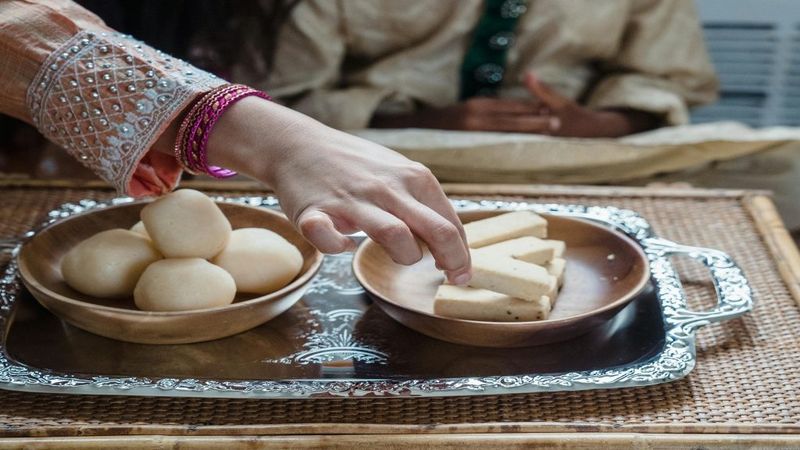
Reaching across the table is akin to disrupting the flow of a waltz. Each movement at the table should be graceful and considered. Imagine a hand darting across, knocking a glass or spilling a sauce, and the chaos it may cause.
Instead, politely ask for an item to be passed. This simple request fosters interaction and ensures a smooth dining experience.
The elegance of a dining affair resides in subtle gestures, each contributing to a harmonious table setting.
Don’t Talk with Your Mouth Full
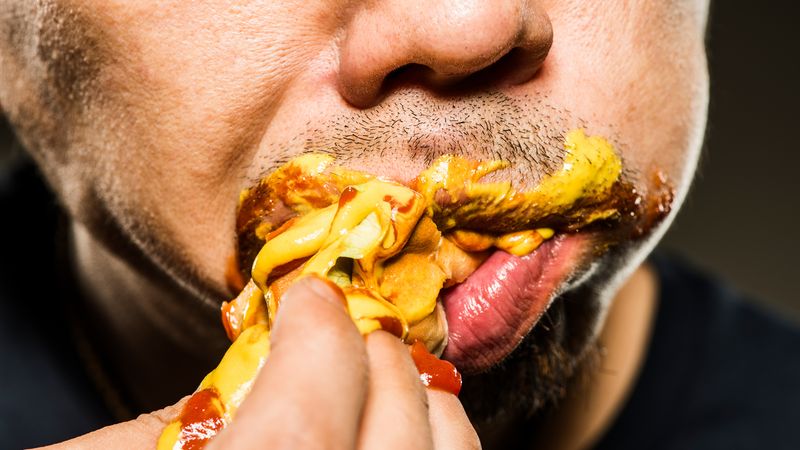
Picture this: sharing a hearty laugh only to catch sight of partially masticated food mid-guffaw. Speaking with your mouth full can be off-putting and detracts from the flow of conversation.
The momentary pause to swallow enhances clarity and dignity in communication. It conveys respect both for the meal and for fellow diners.
By ensuring your words are unencumbered by food, you maintain the elegance and harmony of the dining table.
Don’t Place Elbows on the Table

Resting your elbows on the table can convey a sense of casualness that may not align with the atmosphere. Imagine a formal dinner, the setting pristine, only to be interrupted by a relaxed slouch.
This posture can signal disinterest or disengagement from the meal. Keeping hands and elbows off the table maintains a poised and present demeanor.
Embrace a refined posture to complement the elegance of the dinner setting, enhancing your overall presence at the table.
Don’t Start Eating Before Everyone is Served
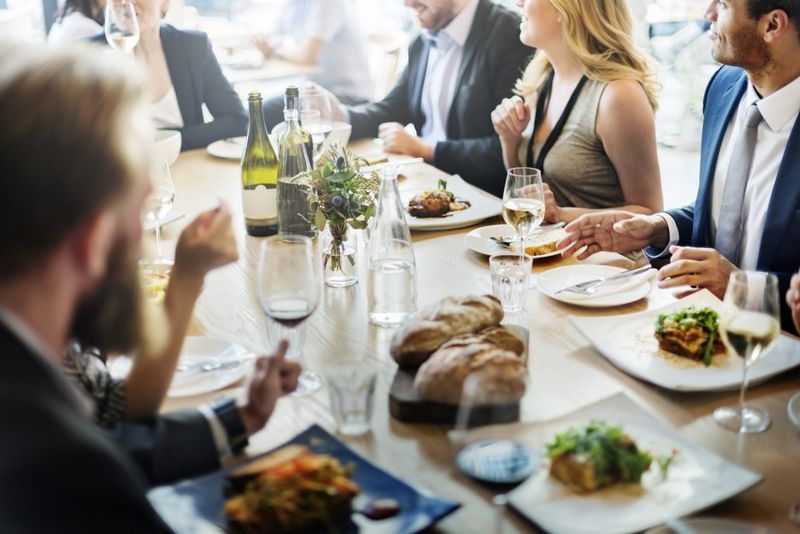
Starting to eat before everyone is served can come across as impatient or inconsiderate. Picture a table set, dishes being distributed, and one eager diner already digging in.
Pausing until all are served fosters a sense of unity and consideration. It allows everyone to begin the meal together, sharing the experience.
This simple act of patience reflects an understanding and respect for the communal aspect of dining.
Don’t Overreact to Spills

Spills happen, and overreacting can heighten the embarrassment for all involved. Picture this: a glass tips, the liquid spreads, and suddenly all eyes are on the spiller.
Respond with calmness and a reassuring smile. Accidents are part of dining and managing them gracefully enhances the dining atmosphere.
By staying composed, you ease the situation, allowing everyone to continue enjoying the meal without undue focus on mishaps.
Don’t Criticize the Food

Criticizing the food at the table can dampen the mood faster than a cold soup. Imagine a host’s proud presentation only to be met with a grimace or a harsh comment.
Instead, focus on the positive aspects of the meal or keep comments neutral. If feedback is necessary, save it for a discreet moment away from the table.
Maintaining a positive environment enhances the dining experience for all, respecting the effort of those who prepared the meal.
Don’t Rush Through the Meal
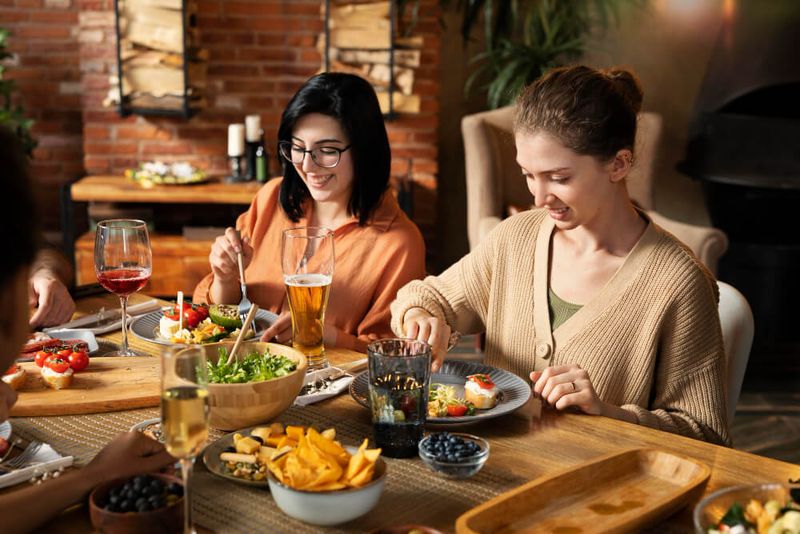
Rushing through a meal can seem as though you’re racing against time, rather than savoring the moment. Picture this: others linger over dessert while you’ve already cleared your plate.
Dining is an experience to be savored, a time for conversation and connection. By pacing yourself, you align with the natural rhythm of the meal.
Enjoy each bite and the company, making the meal a memorable occasion rather than a mere necessity.
Do Make Eye Contact and Smile

The warmth of a smile and the connection of eye contact can transform a dining experience. Imagine the comfort of a welcoming gaze as you share a meal.
These simple gestures invite engagement and convey openness, making others feel valued. They bridge gaps and foster a sense of camaraderie at the table.
Embrace these connections, enhancing the shared experience with genuine warmth and friendliness.
Do Offer to Help Set or Clear the Table
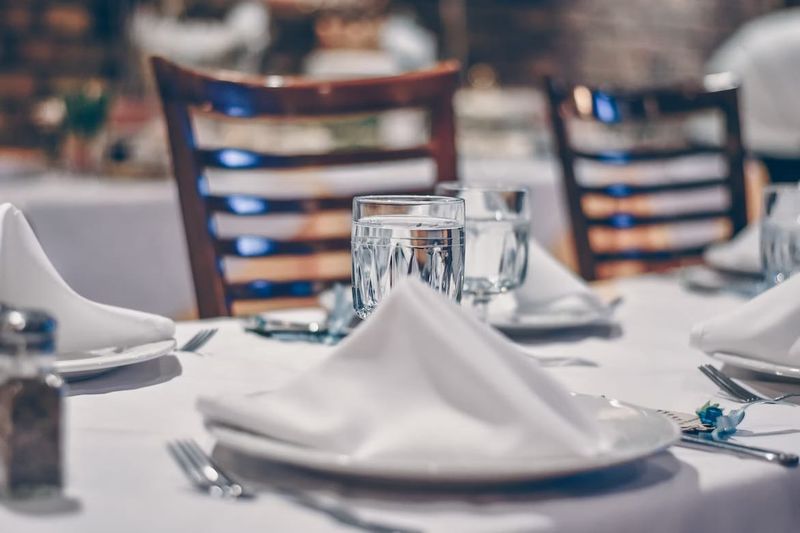
Offering to help set or clear the table is a gesture that resonates with thoughtfulness. It signals involvement and a willingness to contribute.
Imagine a host’s delight as you lend a hand, lightening their burden and sharing in the meal’s preparation or conclusion.
This act of kindness not only builds rapport but enhances the communal spirit of dining, creating a more fulfilling experience for all.
Do Compliment the Host or the Food
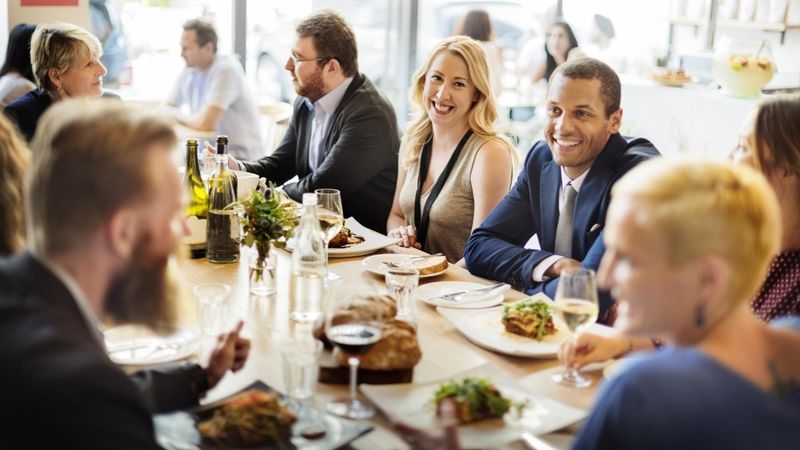
A well-timed compliment can elevate the atmosphere at any dining occasion. Picture the glow of appreciation on a host’s face as you express enjoyment of the meal.
These moments of gratitude foster a positive environment, enhancing everyone’s experience. Whether praising the dish or the setting, genuine appreciation is always welcome.
Nurture this habit to create a circle of goodwill and warmth around the table.
Do Engage in Meaningful Conversation

Conversation is the heartbeat of a good meal. Picture a table alive with stories and laughter, each voice adding to the melody of the gathering.
Engaging in meaningful dialogue enriches the dining experience, creating connections beyond the meal itself. Share thoughts, listen actively, and explore new ideas together.
Through conversation, meals become memorable experiences, weaving individuals into a shared narrative of discovery and enjoyment.
Do Observe Your Host’s Cues
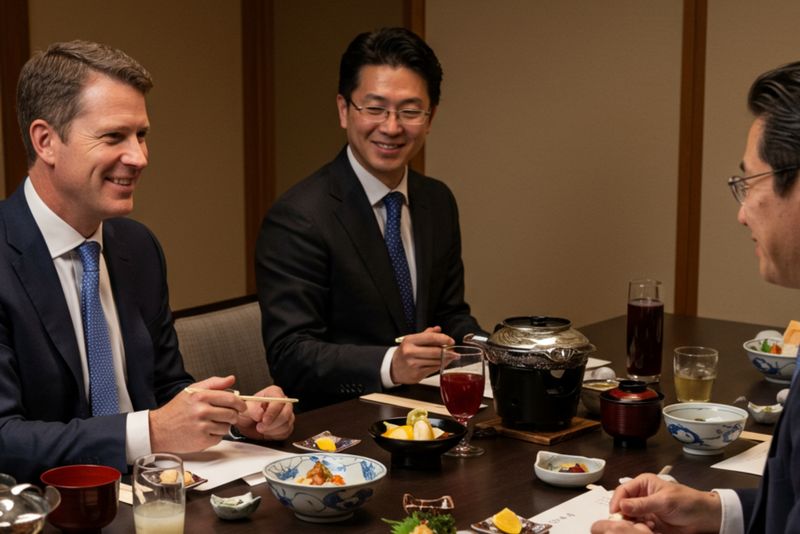
Observing your host’s cues can guide you through unfamiliar dining scenarios. Imagine a formal setting, the host subtly guiding the flow of the meal.
By mirroring their actions and tone, you blend seamlessly into the occasion, respecting their efforts to create a particular atmosphere.
This attentiveness ensures you uphold etiquette, enhancing the elegance and enjoyment of the dining experience.
Leave a comment